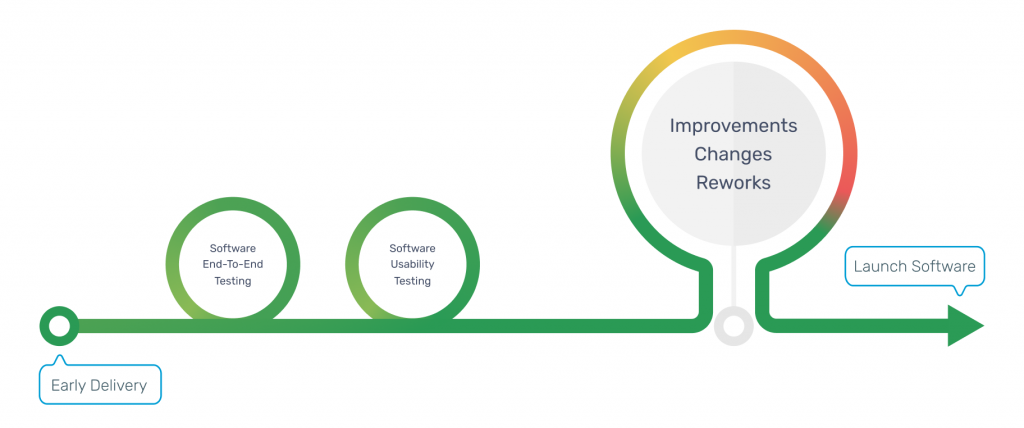This worries everyone responsible for the money spent on software development and its successful market launch. However, actual coding is only the first step to product development and is far from being the central piece of investments on the way to the payoff.
Analyzing our experience with many customers, we noticed that it is essential to design the software to be convenient and suit the needs of end users. The truth is that any software development process begins with the discovery and systematization of requirements for the implementation of software functions, which are designed to cover various needs of end users.
Product Owner and the expert team form lists of data that software should work with and design user interaction with interfaces to ensure the performance of all necessary operations. Further, all these operations are conditionally divided into user flow groups to process the user experience properly, and technological solutions are also sought for implementation. All of this is correct. But a relatively limited group of people participate in this process, and all decisions are made based on their assumptions and beliefs.
Also, we very often face the fact that the perception of the software and all its functions at the initial stages of working with it is quite different from the perception when we conduct usability testing at the stage of early delivery.
The same happens on the Product Owner’s side. The initial assumptions often need adjustments, and the implemented functionality requires changes, improvements, or redesigns. In addition, there may be a hidden amount of work, which is difficult to predict at the beginning of software development for obvious reasons. After the early delivery, the volume of work appears, which causes a cost increase.

How to prevent it?
It can be prevented quite effectively with the help of user testing of the clickable software prototype. The more detailed you put into all user flows, the greater your chance of getting a native perception of the finished program. And here, it is imperative that in processing all edge cases, negative or alternative user flows, all participants of the user testing program have the opportunity to feel the complexity or simplicity of interaction with the user interface. Because every small click or tick in a checkbox, using a radio button, or transitioning to another screen requires time and maintaining control over operations.
Thus, a considerable number of changes, improvements and revisions can be made precisely during the work with the Clickable Software Prototype, even before the Customer spends money on the implementation of the initial vision of the program.
Nevertheless, our experience shows that a significant number of our customers skip the development and user testing of high-fidelity Clickable Software Prototypes due to excessive haste to start programming. As a result, there are cost overruns that they could have avoided. At the same time, our statistics show that these overspends can range from 21% to 139% of the initial budget. Of course, this indicator reflects the level of readiness of all requirements and user interfaces at the initial assessment of labor costs. In addition, the rush to start development leads to a cycle of changes, improvements, and revisions that often significantly delay the launch of the software.
Thus, a sober attitude to the timing of quality software development and the minimization of overspending on preventable activities contribute to saving money and effective planning of the launch of a product with the appropriate level of quality.

Although, in our experience, there are other cases when the Customers perceive all the above as an acceptable evolutionary process of program development and are not particularly concerned about costs or deadlines. But this happens much less often.
So, develop your ideas by making your own decisions, and we will share our experience!